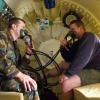Congresso di aggiornamento e divulgazione medico scientifica
Programma definitivo aggiornato
Epigenetica ambiente e salute, Nutrizione e nutraceutica
Dalla Medicina alla fisica o dalla fisica alla medicina?
La riprogrammazione cellulare e il nuovo
Paradigma per la prevenzione
L’uomo ha l’età dei suoi mitocondri
Dalla ricerca di base alla pratica clinica
Presentazione del MASTER sull’EPIGENETICA
Il Convegno si terrà il 9 settembre 2018 a Bologna
presso :
NOVOTEL
BOLOGNA FIERA Hotel
Via Michelino,73 , 40127 BOLOGNA, ITALY
Tel : +39 (0) 51 63 77 707 Fax : +39 (0) 51 51 92 24
Uscita autostrada n. 8
Data Domenica 9 Settembre 2018
Orario: 9.00 – 13.00 14.00 – 18.00
Inizio registrazione ore 08.20
Prenotazione obbligatoria - Segreteria Scientifica
This email address is being protected from spambots. You need JavaScript enabled to view it. - 3356481268
Segreteria organizzativa per le iscrizioni
AKESIOS S.r.l.
Per iscrizioni :
This email address is being protected from spambots. You need JavaScript enabled to view it.
0521647705
Le ricordo che l’iscrizione è obbligatoria e gratuita
Per i primi 100 iscritti vi è l’opportunità di riservare LIGHT LUNCH + TEST EPIGENETICO (valore 120 Euro) a una tariffa di € 50,00 (IVA inclusa) – pagamento da effettuarsi in sede il giorno del Congresso.
Oppure solo il lunch (pausa pranzo) al prezzo di 25 Euro
Al fine di perfezionare l’iscrizione è necessario cliccare al seguente link e completare la registrazione con i suoi dati e con i servizi scelti (solo iscrizione oppure iscrizione + Light Lunch e test epigenetico)
Modulo per iscrizione diretta eventualmente da copiare e incollare sul browser :
https://iscrizioni.akesios.it/UserProfile.asp?IDEvento=2866&noflag=
https://iscrizioni.akesios.it/Login.asp?IDcommessa=EPIGENETICA%20AMBIENTE%20E%20SALUTE%20&Lang=IT
08.20 Registrazione dei partecipanti
Saluto delle autorità
08.45 Introduzione: Dalla ricerca di base alla pratica clinica
Moderatori: Fabio Burigana; Alberto Ugo Caddeo
09.30 Esteban Peiró Monzó
Epigenetica: un nuovo strumento professionale
10.00 Dott. Massimo Bonucci
La medicina integrata, nutrizionale e nutraceutica per i
pazienti -
10.30 La medicina mitocondriale ed il ruolo epigenetico
dell’alimentazione e della nutraceutica alla luce delle
nuove evidenze scientifiche. - Massimo Spattini
11.00 Conoscere i propri rischi per migliorare lo stile di vita:
Cosa, come quando e quanto fare - Mauro Mario Mariani
11.30 Lezione magistrale
“Epigenetica, Medicina, Biofisica e biorisonanza”
Pier Giorgio Spaggiari
12.00 Lezione magistrale
Corso di aggiornamento e formazione sull’epigenetica
nell’era dell’inquinamento 4.0 dal punto di vista chimico,
biochimico e biofisico - Carlos Orozco
12.40 Esperienza Clinica su nutrizione e nutraceutica dal punto di vista epigenetico
Maristella Marchetti
13.10 Lunch
14.10 2° PARTE - LA NUTRACEUTICA NELLA MODULAZIONE EPIGENETICA
Moderatori: Fabio Burigana; Alberto Ugo Caddeo
14.20 L’importanze della nutrizione e della nutraceutica nella prevenzione
Marta Ciani
14.50 Lezione magistrale
La carenza di ossigeno nelle patologie infiammatorie
Mauro Miceli
15.30 Lezione Magistrale
Inflammasoma e sua modulazione(lezioni dalle oroflogosi)
Vincenzo Aloisantoni
16.10 Lezione Magistrale
Dalla genetica all’epigenetica : una nuova possibilità di
fare prevenzione - Damiano Galimberti
16.50 Lezione Magistrale La riprogrammazione cellulare epigenetica nella
prevenzione e supporto nella medicina antiage e nella
neurodegenerazione - Pier Mario Biava
17.20 Corso di formazione Teorico Pratico su epigenetica, nutraceutica e sulla
interpretazione del test “REPORT” nella pratica clinica dal punto di vista biofisico.
Carlos Orozco Sthephan Peiro Maristella Marchetti
18.30 Chiusura Congresso - Rilascio attestati
Un medico saggio disse:
"La migliore medicina è l'amore ".
Qualcuno gli domandò:
"E se non funziona?"
Lui sorrise e gli rispose:
"Aumenta le dosi"
 Oxygen therapy, also known as supplemental oxygen, is the use of oxygen as a medical treatment. This can include for low blood oxygen, carbon monoxide toxicity, cluster headaches, and to maintain enough oxygen while inhaled anesthetics are given. Long term oxygen is often useful in people with chronically low oxygen such as from severe COPD or cystic fibrosis. Oxygen can be given in a number of ways including nasal cannula, face mask, and inside a hyperbaric chamber.
Oxygen therapy, also known as supplemental oxygen, is the use of oxygen as a medical treatment. This can include for low blood oxygen, carbon monoxide toxicity, cluster headaches, and to maintain enough oxygen while inhaled anesthetics are given. Long term oxygen is often useful in people with chronically low oxygen such as from severe COPD or cystic fibrosis. Oxygen can be given in a number of ways including nasal cannula, face mask, and inside a hyperbaric chamber.